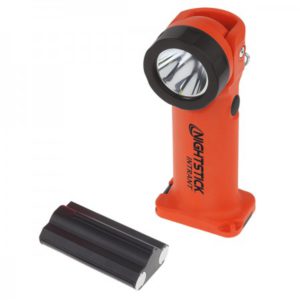At the Intrinsically Safe Store, we’re your one-stop-shop for safety equipment needs. Dedicated to reliability, we offer battery options for your intrinsically safe flashlight.
Understanding Intrinsically Safe Flashlights
Intrinsically safe flashlights are designed to operate in hazardous environments where standard flashlights may cause a spark, leading to an explosion. These flashlights are essential in industries such as oil and gas, mining, and chemical processing. The type of battery used in these flashlights significantly impacts their performance and safety.
The Role of Batteries in Intrinsically Safe Flashlights
The battery is a crucial component of an intrinsically safe flashlight. It not only powers the flashlight but also contributes to its safety features. Different types of batteries offer varying levels of performance and safety.
Alkaline Batteries
Alkaline batteries are commonly used in intrinsically safe flashlights due to their long shelf life and high energy density. They are reliable and affordable, making them a popular choice for many industries. However, they are not rechargeable, which can be a disadvantage in long-term use.
Lithium Batteries
Lithium batteries are another popular choice for intrinsically safe flashlights. They offer a higher energy density than alkaline batteries and are rechargeable. However, they are more expensive and require special handling due to their potential for thermal runaway.
Nickel-Metal Hydride (NiMH) Batteries
NiMH batteries are a rechargeable option that offers a good balance between performance and cost. They have a lower energy density than lithium batteries but are safer to handle.
Choosing the Right Battery for Your Intrinsically Safe Flashlight
When choosing a battery for your intrinsically safe flashlight, consider the following factors:
- Energy Density: This determines how long the flashlight can operate on a single charge.
- Rechargeability: Rechargeable batteries can be more cost-effective in the long run.
- Safety: Some batteries have a higher risk of causing sparks or overheating.
- Cost: The price of the battery can significantly impact the overall cost of the flashlight.

The type of battery used in an intrinsically safe flashlight plays a crucial role in its performance and safety. Alkaline, lithium, and NiMH batteries each have their advantages and disadvantages. By considering factors such as energy density, rechargeability, safety, and cost, you can choose the right battery for your needs.
At the Intrinsically Safe Store, we offer a wide range of intrinsically safe flashlights with different battery options to suit your needs. Visit our website to explore our products or contact us for more information.


























